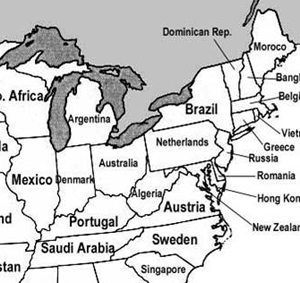The New York Times had a great article a few months ago about redesigning the font used on highway signs. You’ve probably seen the current font, Highway Gothic, a million times without ever thinking about it – it’s been in use for more than 50 years.
 Worrying about the font on the signs seems pretty silly compared to all the engineering and resources that go into a single bridge, let alone the entire highway system. Why does this merit an article in the Times and what does this have to do with programing, web development, social software, or any of the topics many visitors to this blog are interested in?
Worrying about the font on the signs seems pretty silly compared to all the engineering and resources that go into a single bridge, let alone the entire highway system. Why does this merit an article in the Times and what does this have to do with programing, web development, social software, or any of the topics many visitors to this blog are interested in?
Programmers and analysts sometimes doubt the value of design. It’s hard work gathering all the requirements and writing all the code – we don’t have time to worry about how pretty it looks. A lot of projects we work on, though, involve creating user interfaces, often web applications. That means that, when it comes down to it, your job is to support the user’s tasks.
Now if someone wanted to add 10% to your hours to pick just the right shade of chartruse, you would be justifiably miffed. But good interface designers will have good, empirically-tested reasons for their work and the guidelines they live by. Highway signs are a great example of this kind of empirical benefit:
Intrigued by the early positive results, the researchers took the prototype out onto the test track. Drivers recruited from the nearby town of State College drove around the mock highway. From the back seat, Pietrucha and Garvey recorded at what distance the subjects could read a pair of highway signs, one printed in Highway Gothic and the other in Clearview. Researchers from 3M came up with the text, made-up names like Dorset and Conyer ? words that were easy to read. In nighttime tests, Clearview showed a 16 percent improvement in recognition over Highway Gothic, meaning drivers traveling at 60 miles per hour would have an extra one to two seconds to make a decision.
A one or two second gain in legibility matters a lot when your life depends on it. Few web applications present the same kind of physical danger, but multiply a small gain over an application with 10,000 users, operating 24 hours a day for a year, and you can see how this can impact the business. Good design is part of the larger concept of usability. As anyone who’s done any usability testing can tell you, most applications have many small, easy-to-change pitfalls that can quickly add up to huge wastes of time and effort.

